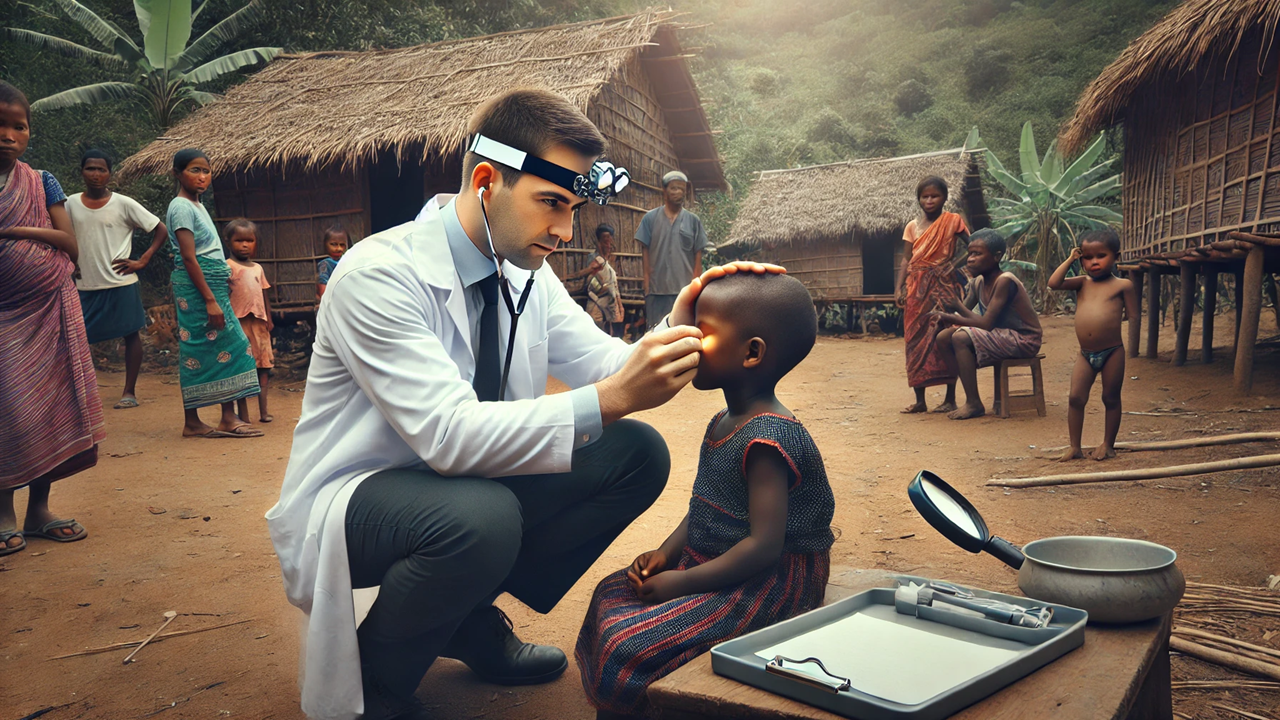The Silent Battle Against Trachoma: WHO's Progress and the Road Ahead
The WHO's recent report on trachoma highlights the significant progress made in reducing the global population at risk of trachoma-induced blindness through the SAFE strategy. However, challenges remain due to varying prevalence rates in different districts. Continued efforts and adaptive strategies are essential for achieving global elimination.

In the world of infectious diseases, trachoma stands as a formidable foe, silently threatening the sight of millions. The World Health Organization's (WHO) recent report, "WHO Alliance for the Global Elimination of Trachoma: Progress Report on Elimination," highlights both the progress made and the challenges that remain in the fight against this preventable cause of blindness.
Understanding Trachoma
Trachoma, caused by specific serovars of Chlamydia trachomatis, is the leading infectious cause of blindness globally. It spreads through direct contact with ocular and nasal secretions or via eye-seeking flies. The initial infection results in inflammatory conjunctivitis termed active trachoma. If left untreated, repeated episodes can lead to scarring on the inner eyelids. This scarring can cause trachomatous trichiasis (TT), where eyelashes turn inward and scratch the eye, leading to extreme pain and potential blindness.
The SAFE Strategy: A Multi-faceted Approach
To combat trachoma, the WHO employs the SAFE strategy, an acronym for Surgery, Antibiotics, Facial Cleanliness, and Environmental Improvement. Each component of this strategy plays a crucial role in breaking the cycle of infection and transmission.
Surgery: Essential for individuals with TT, surgery helps correct the inward growth of eyelashes, preventing further damage to the cornea.
Antibiotics: Administered to clear ocular Chlamydia trachomatis infection, antibiotics are a cornerstone in treating and preventing the spread of trachoma.
Facial Cleanliness: Promoting facial hygiene is vital to reduce transmission, especially among children.
Environmental Improvement: Enhancing access to clean water and improving sanitation facilities significantly reduces the incidence of trachoma.
Criteria for Elimination
For trachoma to be declared eliminated as a public health problem, specific criteria must be met.
- The prevalence of TT unknown to the health system must be less than 0.2% among individuals aged 15 years and older.
- The prevalence of trachomatous inflammation—follicular (TF) must be less than 5% among children aged 1–9 years.
- The health system must demonstrate the capability to identify and manage new cases of TT.
Progress and Challenges in 2023
The 2023 progress report reveals significant strides in reducing the global population at risk of trachoma-induced blindness. The implementation of the SAFE strategy has been instrumental in this achievement. However, the report also underscores the complexity of eradicating trachoma, given the varying prevalence rates across different districts. Tailored strategies are required to address these disparities effectively.
The report emphasizes that while great progress has been made, the fight against trachoma is far from over. Continued efforts and adaptive strategies are necessary to overcome the remaining hurdles and achieve global elimination.
The Road Ahead
Looking forward, the WHO remains committed to the SAFE strategy, adapting it to meet the unique challenges presented by different regions. The focus will be on maintaining high coverage of antibiotic treatment, ensuring the availability of surgical interventions for TT, and promoting sustainable improvements in water and sanitation infrastructure.
Public health education will also play a crucial role in encouraging facial cleanliness and overall hygiene. Community engagement and participation are vital to the success of these initiatives, as local practices and beliefs significantly influence the effectiveness of public health interventions.
The battle against trachoma is a testament to the power of coordinated public health efforts. The WHO's 2023 progress report showcases the achievements made possible through the SAFE strategy while also highlighting the ongoing challenges. With sustained commitment and adaptive strategies, the global elimination of trachoma as a public health problem is within reach.
- READ MORE ON:
- Trachoma
- WHO
- SAFE Strategy
- Public Health
- Blindness Prevention
- Global Health
- FIRST PUBLISHED IN:
- Devdiscourse
ALSO READ
Congress gave protection to infiltrators who grabbed forests, threatening security and identity of Assam, claims PM at Guwahati rally.
Sreenivasan: A Genius Who Defined Malayalam Cinema with Wit and Insight
WHO Academy Launches New Course to Strengthen National Cancer Control Planning
Belgium Gives €8m to WHO to Boost Global Access and Local Manufacturing Capacity
Have agreed to integrate safe, effective traditional medicine into health systems, especially private healthcare: WHO D-G Tedros Ghebreyesus.










